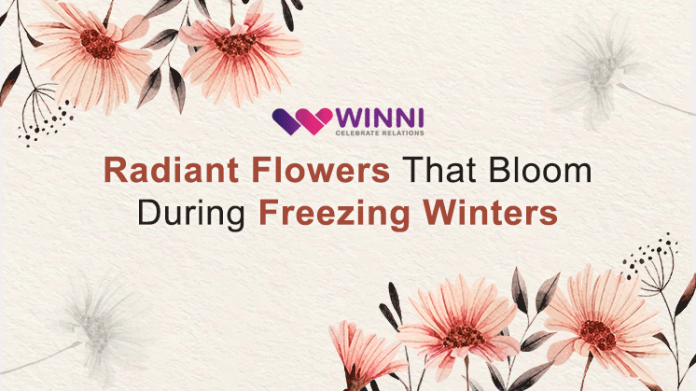Far from being a season when most perennials die and wither away, many perennial flowers prosper even in winter. Most perennials need brief day lengths or brief exposure to colder temperatures to flower. Most of these beautiful plants grow well in shaded areas and can tolerate lower temperatures than some of the more ephemeral shrubs. Some of the most popular garden flowers – such as hydrangeas and serum – do very well during cold months. The following are just a few plants that can be maintained year-round by taking proper care of them. You can order flowers online to surprise your loved ones.
Quince Blossoms
Quince blossoms are perennial for winter bloom. These blue flowers can be maintained throughout the year by clipping them every spring as they bloom. However, be sure to prune the plants regularly because they will not always bloom as large or as colorful as they did in the spring. Pruning also helps prevent disease. Keep this group of winter-blooming flowers mulched to conserve moisture.
Although many flowers are not bothered by the cold weather, a few plants are best left alone during the winter. Junipers, hollyhocks, spireas, and buckeye trees should all be kept in the ground all winter long to prevent damage and disease. Winterized shrubs such as these should be covered with a thick blanket of mulch to keep roots from freezing. Don’t forget that most flowers will bloom again in spring. Just wait for the right weather!
Lobelia
Lobelia grows well in almost any climate, but it needs a bit of extra moisture during the cooler months. Native to Mexico and Central America, this shrub should be planted in the spring after rains have occurred. If you cannot locate, live, or cut Lobelia, buy a container of the plant from a nursery. Cut about one-half inch high, and spread the roots, so they receive plenty of moisture.
Since this flower’s scientific name is” Lobelia,” the native name for it is “Lobo.” It is an annual bulb, usually growing to two to three feet tall. The blooms peak in late and early summer and last for several weeks.
Gladiola
Another of the early-flowering shrubs that bloom in the fall and winter is the gladiola. It is a deciduous shrub with rigid branches that reach higher than the central point of the trunk. The plant grows to one and a half feet tall. Many species exist, but the most common and beautiful is the white-colored gladiola. It often produces tiny white or cream flowers and grows best when planted in full sun.
There are many more early-flowering plants that flower in the fall and winter months. Almost every kind of flowering plant grows better in early-fall conditions, and many of them produce flowers in the winter months as well. A few exceptions, such as the camellia, perennials, and some annuals, do not grow well during the cold winter months. But, for all the flowers that bloom in fall and winter, it’s easy to see why this is such a spectacular time of year for gardens.
But, some perennial plants do extremely well no matter what season it is. One of the most popular is the English lily or better known as the English maid. The tiny purple flowers come in two colors: Red and Pink. The English lily has been an important part of the English culture since before the Norman Conquest. They were brought to Britain from China during the seventh and eighth century by the Buddhist monk Huang Di, who also brought with him the lily. The name English maid comes from tying red silk scarves around their necks, which is where the name English maid came from.
Wrapping up
Other perennials that do well no matter what season are the shrub calla lily or blue star phlox. They grow well in full sun, with the flowers come in a range of vivid colors from white, pink, purple, orange to burgundy. Other easy to grow shrubs to take care of in the winter are the California poppies and the California bluebells. Both plants are easy to grow. Poppies are best planted in groups of four or more, while bluebells will grow just fine singly.
Most jasmine, or jasmines as they are also known, bloom in late summer through early fall. The blooms open up into several shades of pink, ranging from bright yellow to deep orange. Jasmine is the only floral native to Africa, although African jasmine is often sold as jasmine-scented oil. Most varieties of jasmine used in floral arrangements are imported from Asia. In the spring, all of these blooms bloom for the first time.




